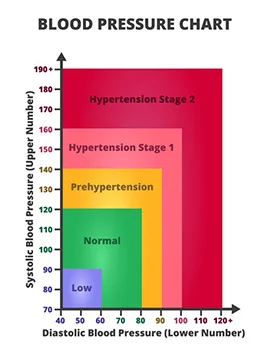

Introduction: Living with diabetes or high blood pressure requires proactive health management. Both conditions, if left unchecked, can lead to serious complications, but with the right habits in place, you can take control of your health. In this post, we’ll explore how to build effective habits for managing blood sugar and blood pressure levels, and how habit tracking can help you stay consistent and achieve long-term wellness.
Why Habit Management is Crucial for Diabetes and Blood Pressure: Diabetes and high blood pressure are chronic conditions that require daily attention. Healthy routines—like regular exercise, balanced nutrition, and medication management—play a key role in keeping these conditions in check. That’s where habit tracking comes in. By monitoring your health regularly, you can stay on top of your condition and adjust your habits to improve your overall well-being.
 Step 1: Tracking Blood Sugar for Diabetes Management For individuals with diabetes, keeping blood sugar levels stable is essential to preventing complications. Building habits that support balanced blood sugar involves consistent monitoring, medication adherence, and mindful eating.
Step 1: Tracking Blood Sugar for Diabetes Management For individuals with diabetes, keeping blood sugar levels stable is essential to preventing complications. Building habits that support balanced blood sugar involves consistent monitoring, medication adherence, and mindful eating.
Example: Rajesh, who was recently diagnosed with Type 2 diabetes, found it difficult to stay on top of his blood sugar levels. By using a digital health tracker, he could record his readings and spot patterns. This awareness helped him adjust his diet and medication more effectively, keeping his blood sugar stable.
 Step 2: Monitoring Blood Pressure for Hypertension High blood pressure, or hypertension, often has no obvious symptoms, making it critical to monitor your levels regularly. Developing habits around blood pressure control can significantly reduce the risk of heart disease and stroke.
Step 2: Monitoring Blood Pressure for Hypertension High blood pressure, or hypertension, often has no obvious symptoms, making it critical to monitor your levels regularly. Developing habits around blood pressure control can significantly reduce the risk of heart disease and stroke.
Example: Tanisha, who has a family history of hypertension, started tracking her blood pressure daily. She noticed that on days when she was stressed or ate salty foods, her readings spiked. This awareness helped her make better choices, such as managing stress with yoga and reducing her salt intake.
Step 3: Creating a Sustainable Routine for Long-Term Health Effective management of diabetes and blood pressure isn’t just about what you do today—it’s about building habits that you can maintain for life.
Example: Mayank used a habit tracker to log his daily walks, medication, and meals. After a few weeks, he saw a clear pattern: his blood pressure improved significantly on days when he walked for at least 30 minutes. By reviewing his tracker, he was able to build exercise into his daily routine and maintain better control of his blood pressure.
Step 4: Staying Consistent and Overcoming Setbacks Consistency is key to managing diabetes and blood pressure effectively, but setbacks are inevitable. The important thing is not to get discouraged when you miss a day of tracking or experience a spike in blood pressure or blood sugar.
Example: Sonia found it difficult to keep up with her diabetes management during busy workweeks. By using a habit tracking app that sent her daily reminders, she became more consistent with checking her blood sugar levels and managing her diet.
Conclusion: Managing diabetes and blood pressure doesn’t have to be overwhelming. By focusing on building healthy habits and using a tracker to monitor your progress, you can stay on top of your condition and make informed choices that benefit your long-term health. The small steps you take each day—whether it’s tracking your meals, monitoring your blood sugar, or logging your exercise—can lead to lasting improvements in your health.
Call to Action: Start tracking your health today! Whether it’s your blood sugar, blood pressure, or daily habits, using a tracker regularly will help you stay consistent and in control. Choose one habit to begin with and build from there—your future self will thank you.